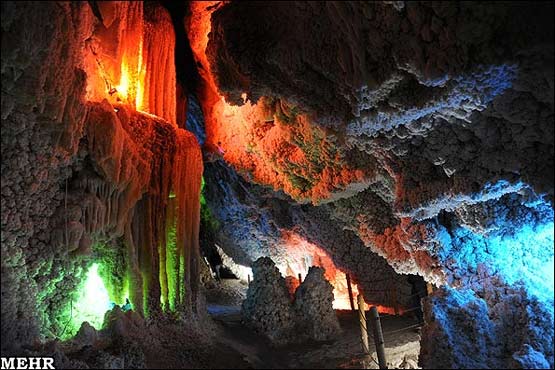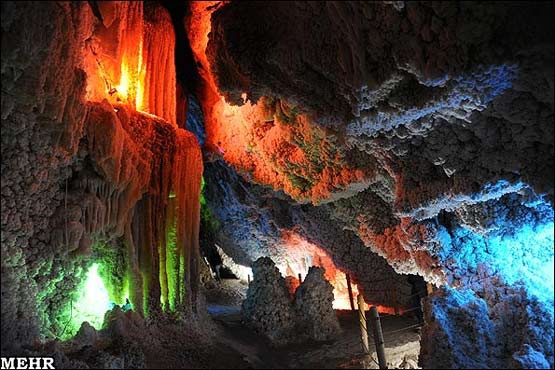 TEHRAN, Sep. 28 (MNA) � The head of Museum of Natural History and Genetic Reserves of the Department of Environment has said only 180 out of about 2000 caves have been mapped so far.
TEHRAN, Sep. 28 (MNA) � The head of Museum of Natural History and Genetic Reserves of the Department of Environment has said only 180 out of about 2000 caves have been mapped so far.Farshad Fattahi told Mehr News that 10 more caves would be mapped by the end of the present year. �Given the sheer diversity and depth of history of these caves, the Department of Environment has taken measures to protect and optimally use these natural resources,� he said.
�The Department also drafted a collection of regulations and directives which specify accepted practices in tourism and protecting caves from man-made pollution,� told the official to Mehr News.
Fattahi added that most of the caves traced back to 20 million years in Tertiary period. �About 180 caves have been mapped places them in the International�Union of Speleology list of registered caves; Iran joined the union last year as 63rd�member,� he said.�mapping of the caves is an interdisciplinary issue, where scientists of physics, chemistry, geography, environment, and natural history will work together,� Fattahi said, lamenting that unfortunately, �Only Iran holds National Day of Clean Caves, since the issue of pollution and dumping of the waste in caves is a raison d��tre of such a day, and invites for a national resolve to clean these natural phenomena of the filth of the rubbish.�

�In the occasion of the Day, 100 caves will be cleaned of dumped wastes, since the rubbish greatly modifies the�physical and chemical properties, including the acidity of the components of the rocks constituting the cave, thus making it difficult to identify and register the caves,� he told Mehr News.
Fattahi cited unregulated and unprotected tourism practices in the caves as a major hazard. �Remiss tourists damage caves physically; they carry objects which would, in one or the other way, damages the caves,� he objected.
Fattahi went on to say that Iran was a �museum of speleology and an academy.� However, he admitted that the issue had suffered general neglect and official recognition. �For example, Praw Cave in Kermanshah suffers from the lack of scientific studies; the cave belongs to the age of dinosaurs, where they roamed the thick forests of western Iranian plateau,� he said.

�Since 1970, a private institution in Britain has been working to fully explore different aspects of the cave, which amounted to a book which is yet to be translated into Persian,� Fattahi said.
�Caves are important as sources of drink water in many parts of the country; in a time when we face the possible crisis of draught, protecting and optimally using of caves invite authority to focus on the issue,� he emphasized.
By Mehr News Agency
The Iran Project is not responsible for the content of quoted articles.











